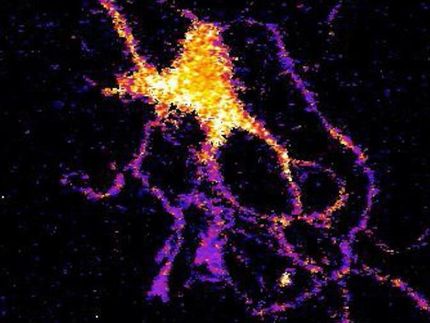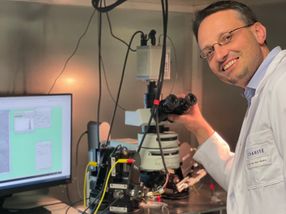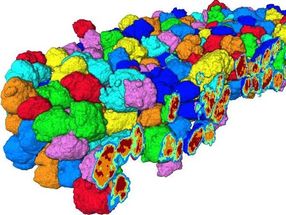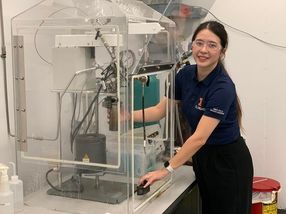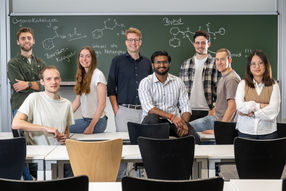One protein, two light-activated states
Advertisement
Researchers from Bochum and Regensburg have discovered that a light-sensitive ion channel from the alga Guillardia theta has two light-activated states. The newly discovered second state ensures that the ion channel can be reopened particularly quickly after it has been closed. This makes it interesting for optogenetics, a method used by researchers to specifically control the activity of nerve cells using light.
The team led by Dr. Kristin Labudda and Associate Professor Dr. Carsten Kötting from the Department of Biophysics at Ruhr-Universität Bochum and Prof. Dr. Till Rudack from the University of Regensburg report on their findings in the journal Communications Biology.
Optogenetics with potential in therapy
In optogenetics, certain nerve cells are genetically modified so that they produce light-sensitive proteins from other organisms. The activity of the modified nerve cells can then be controlled using light. "If light is directed at these proteins, they change their structure and activate or inhibit the cells," explains Till Rudack.
For some time now, researchers have also been experimenting with optogenetics for the treatment of certain diseases. "Optogenetics is a promising new method, for example for the treatment of Parkinson's disease," says Carsten Kötting. "It could be used to reactivate damaged nerve cells in the brain and partially restore motor skills." However, there is still a long way to go before the procedure can possibly become established in everyday clinical practice. Teams around the world are therefore working to better understand light-sensitive proteins and identify optimal candidates for optogenetics.
One well-studied protein is the ion channel GtACR1 from the alga Guillardia theta, a so-called channelrhodopsin, which serves the alga as a light sensor. When GtACR1 is activated by light, the pore of the channel opens and negatively charged ions such as chloride flow through.
Particularly efficient ion channel
In the current study, the researchers from Bochum and Regensburg showed why GtACR1 is so efficient. They investigated the ion channel using Fourier transform infrared spectroscopy, which can be used to record the structural states of proteins. The group demonstrated that GtACR1 has two light-activated states: the known ground state and an additional intermediate state called O-intermediate. In darkness, the ground state is present, from which the normal photocycle emerges when the channel is first activated by light, as is the case with other channelrhodopsins. In the course of this cycle, various intermediate stages or so-called intermediates are passed through, which differ in their structure and ionic conductivity. One of these is the O-intermediate, which precedes the ground state by several seconds. However, in contrast to other channelrhodopsins, GtACR1 can be light-activated due to the configuration of the retinal in the O-intermediate - the building block that serves as a direct light sensor.
"The second light-activated state we discovered ensures that the channel can be reopened particularly quickly, which significantly increases its ionic conductivity," explains Kristin Labudda. For applications in optogenetics, the higher ionic conductivity means that it is possible to react very precisely to stimuli and the cells can be controlled in a more targeted manner. This opens up new possibilities for optogenetic applications. "With our work, we have discovered a channelrhodopsin with several light-activated states for the first time," summarizes Carsten Kötting. "It should be possible to generate additional light-activated states in other channelrhodopsins through mutations and thus increase their effectiveness. These findings could pave the way for even more efficient tools in optogenetics - with promising prospects for research and medicine."
Note: This article has been translated using a computer system without human intervention. LUMITOS offers these automatic translations to present a wider range of current news. Since this article has been translated with automatic translation, it is possible that it contains errors in vocabulary, syntax or grammar. The original article in German can be found here.




